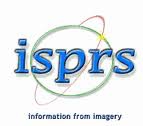Oblique Cameras and Dense Image Matching
Organized by:
- Fabio Remondino, FBK Trento, Italy
- Norbert Haala, University of Stuttgart, Germany
- Norbert Pfeifer, TU Wien, Austria
- Malcolm Havercroft, Ordnance Survey, UK
- Markus Gerke, Twente University / ITC, The Netherlands
Geospatial data generated automatically from images is currently experiencing a technological boost: increasing quality of digital airborne imagery, developments and availability of oblique multi-camera systems, and innovations in dense image matching algorithms. National Mapping and Cadastral Agencies (NMCAs) consider changing their production pipelines while photogrammetric companies consider upgrading their airborne cameras to multi-view systems. These developments and considerations motivated the launch of two EuroSDR / ISPRS benchmarks:
1) “Multi-platform photogrammetry” which aims to assess the accuracy and reliability of current methods for calibration and orientation of images acquired by different platforms (oblique cameras, UAV, terrestrial) as well as their integration for image matching and dense point cloud generation
http://www2.isprs.org/commissions/comm1/icwg15b/benchmark_main.html
2) “High Density Aerial Image Matching” which aims to evaluate the potential of photogrammetric 3D data capture in view of the ongoing developments of software for automatic image matching, building upon the first, very successful EuroSDR benchmark of High Density Image Matching http://www.ifp.uni-stuttgart.de/ISPRS-EuroSDR/ImageMatching/index.en.html
Following these activities, the EuroSDR / ISPRS workshop on Oblique Cameras & Dense Image Matching will bring together experts and users of these technologies and solutions to discuss the latest developments and present the latest results.
The program of the event featured the following talks (slides available):
Session 1: Benchmarks, oblique sensors and workflows
• Markus Gerke, Francesco Nex (Twente University / ITC, The Netherlands): "ISPRS/EuroSDR benchmark Multi-platform Photogrammetry - Preliminary results"
• Norbert Haala (Univ of Stuttgart, Germany): “Benchmark on high density aerial image matching”
• René Rothe, Mathias Motz (Leica / Hexagon): “Oblique sensors, workflows and information - a practical perspective”
Session 2: Advancements in data acquisition and processing
• Konrad Wenzel (nFrames): “Flight planning for city acquisition at high resolution”
• Yuri Raizman (VisionMap): “A3 Edge for oblique and dense DSM – practical case study”
• Michael Gruber (Vexcel / Microsoft): “Ultracam Osprey - nadir meets oblique”
Session 3: NMCA experiences
David Holland (Ordnance Survey UK): “Ordnance Survey's experience in creating dense point clouds and 3D building models from oblique imagery”
• Andy McGill (Ordnance Survey Ireland): “LOD 2 from vertical & oblique imagery”
Session 4: Advancements in data processing (I)
Lisa Chen (Pix4D): “An oblique-imagery case analysis of Pix4Dmapper densification result”
Mathias Rothermel (nFrames): “Oblique image processing in SURE: first experiments and results”
• Hans Joachim Benfer (Aerowest): “True orthophotos and dense point clouds from multi-perspective aerial imaging - Opportunities and challenges in practice”
Session 5: Advancements in data processing (II)
• Jens Kremer (IGI): “Dense Image matching with PentaDigiCAM images – Experiences and options”
• Chris Longworth (Blom): “Experiences with techniques for 3D modelling from oblique imagery in Blom”
• Isabella Toschi, Fabio Remondino (FBK Trento, Italy): “Experiences with oblique datasets: AT, dense matching and building modeling”
Session 6: R&D and experiences
• Wojciech Ostrowski, Krzysztof Bakula, Zdzislaw Kurczynski (Warsaw University of Technology): "Quality assessment of dense image matching on oblique images - experience in Poland"
• Mozhdeh Shahbazi, Gunho Sohn and Jerome Theau (York University, Canada): "From sparse matching based on evolutionary search to dense matching based on intrinsic curves - Preliminary results"
• Karlheinz Gutjahr, Roland Perko (Joanneum Research, Austria): “3D Mapping with RSG”
• Willi Karel, Norbert Pfeifer (TU Wien, Austria): “Analysis of oblique image datasets with OrientAL”
We gratefully acknowledge the sponsorship of Leica Hexagon.




